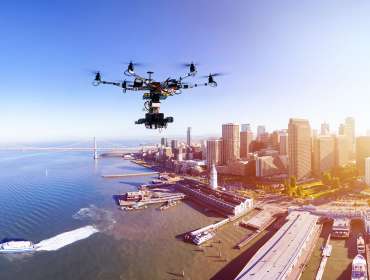Stability is key whether you’re capturing breathtaking landscapes, filming fast-paced action scenes, or creating captivating vlogs. Shaky footage can detract from your final product. Gimbals are ingenious devices that provide smooth and steady motion, allowing you to achieve professional-looking shots. However, with many options available on the market, choosing the right gimbal camera stabilizer can be daunting.
Most cameras now have built-in image stabilization; of course, there’s the ever-trusty tripod or monopod. But if you want truly stable video footage, the handheld camera stabilizer or camera gimbal is the way to go. First, let’s discuss how a stabilizer will level up your work, and then we will dive into some awesome Gimbals that fit any budget.
What is a Camera Stabilizer?
A camera stabilizer is any external mount or physical device that minimizes or prevents unwanted shake or movement. Camera stabilizers come in many forms, including tripods, harnesses, cranes, dolly tracks, arms, and gimbals. Each variety has its own specific uses and methods of operation.
While many cameras feature in-camera stabilization, and some lenses also have internal stabilizers, these stabilization methods aren’t as effective as physical stabilization rigs or devices. Many in-camera stabilizers crop your image, so you’ll lose some of the field of view.
With the right stabilizer, you can shoot just about any sequence handheld and never worry about camera shake.
Types of Camera Stabilizers
The most common stabilizers in the motion picture industry are handheld stabilizers, 3-axis gimbals, and vest-based stabilizers, including camera support arms and sleds.
The type of stabilizer you select will depend entirely on the type of camera you’re using, the weight of your gear, the environment where you’re shooting, and the type of camera movement you’re trying to avoid. You wouldn’t use the same stabilizer to capture a smooth walk-and-talk shot as you would for a high-speed car chase.
Handheld
Handheld camera stabilizers work most effectively with smaller cameras, from mirrorless camera bodies and action cameras to full-size DSLRs. These devices usually include a camera platform, a handle, and a counterweight.
Vest stabilizer
Vest stabilizers, which are also called Steadicams, distribute the weight of the camera and stabilizer components across the camera operator’s shoulders and chest to help avoid fatigue.
3-Axis gimbal
3-axis gimbals use motors and hinged arm sections to keep your camera steady while it’s in motion. Button or joystick controls influence the pan, tilt, and roll of the camera for the smoothest shot.
Why You Need a Camera Stabilizer & Gimbal for Smooth Video Footage
Filmmakers can use a multitude of tools and techniques to create stable footage. Sturdy tripods, versatile monopods, and handheld shooting with three points of contact are all common techniques in cinematography.
The newest professional cameras consider this by including built-in image stabilization features on their sensors or electronically through their software. Although these new technologies can be quite effective for shooting stable footage, they can’t quite measure up to the quality of footage that you can create by using a camera stabilizer or gimbal.
Adding a camera stabilizer to your cinematography toolkit is a great way to increase the overall production value of your footage. Gimbal stabilizers offer more creative freedom than traditional tools such as tripods and monopods since they produce smooth and stabilized handheld footage, even while the filmmaker and camera move.
We’ve rounded up the best camera stabilizers and gimbals on the market to help you take your cinematography to the next level. These are some of the best camera gimbals on the market today and offer various options to accommodate filmmaking setups of any size, weight, or budget.
Choosing the Right Gimbal Camera Stabilizer
Define Your Purpose
Before delving into the world of gimbals, it’s crucial to understand your specific requirements. Are you a travel enthusiast looking to capture smooth footage on the go? Or perhaps you’re a filmmaker aiming for cinematic perfection? By defining your purpose, you can narrow your options and focus on gimbals tailored to your needs.
Consider Payload Capacity
One of the most critical factors to consider when choosing the right gimbal for you is its payload capacity. This refers to the maximum weight the gimbal can support while maintaining stability. A gimbal with a lower payload capacity may suffice if you’re using lightweight mirrorless cameras or smartphones. However, if you’re working with heavier DSLR or cinema cameras, opt for a gimbal with a higher payload capacity to ensure optimal performance.
Evaluate Stabilization Modes
Gimbals typically offer various stabilization modes designed to cater to different shooting scenarios. Common modes include Pan Follow, Lock Mode, and POV (Point of View) Mode. Pan Follow mode allows the gimbal to follow your movements horizontally while keeping the camera level, which is ideal for tracking shots. Lock Mode locks the camera in a specific position, which is useful for capturing stable stationary shots. POV Mode enables the gimbal to mimic your movements in all directions, adding dynamic motion to your footage. Consider the types of shots you intend to capture and do your research so you can choose the right gimbal with stabilization modes that align with your creative vision.
Portability and Size
If you’re frequently on the move or traveling to remote locations, portability becomes a crucial factor. Opt for a gimbal that balances stability and portability, ensuring ease of transportation without compromising performance. Compact gimbals are ideal for handheld use and can be effortlessly packed into a backpack or camera bag, making them perfect companions for adventure seekers and content creators on the go.
Battery Life and Charging Options
The last thing you want is to run out of battery mid-shoot. When selecting the right gimbal, pay attention to its battery life and charging options. Some gimbals offer extended battery life, allowing for prolonged shooting sessions without frequent recharging. Additionally, consider whether the gimbal can be charged via USB or requires proprietary charging cables. USB charging provides flexibility and convenience, especially when traveling or shooting in remote locations.
Compatibility and Accessories
Ensure that the gimbal you choose is compatible with your camera or smartphone. Many gimbals offer interchangeable mounting plates and adjustable arms to accommodate various devices. Additionally, explore the availability of accessories such as extension rods, tripod mounts, and smartphone adapters, which can enhance the versatility and functionality of your gimbal.
Budget Considerations
Gimbals come in a range of price points, from budget-friendly options to high-end professional models. While it’s tempting to splurge on the latest and greatest technology, consider your budget and the value proposition offered by each gimbal. Determine the features that are essential for your workflow and invest in a gimbal that offers the best balance of performance and affordability.
Choosing the right gimbal requires careful consideration of factors. By defining your purpose, evaluating your specific needs, and conducting thorough research, you can find the perfect gimbal to elevate your photography and videography endeavors. So, set sail on your quest for stability, and may your footage be smooth and steady as you capture the world through the lens of your chosen gimbal.
Future-Proofing Your Investment
Remember that sometimes it’s important to select a slightly more robust piece of equipment, even if it offers features you may not use right away. As you continue to develop your creative vision, you’ll be happy you chose an option you can grow into rather than outgrow within a year.
Along those lines, it’s best to pick a gimbal with a maximum payload that exceeds your current gear weight. This will allow you to keep using your gimbal in the future if you upgrade your camera.
Best Camera Stabilizer & Gimbal Picks for Mirrorless & DSLR Models
Zhiyun CRANE-M2S 3-Axis Handheld Gimbal Stabilizer
The Zhiyun CRANE-M2S 3-Axis Handheld Gimbal Camera Stabilizer is a versatile option suitable for mirrorless cameras, smartphones, and action cameras. It offers stable footage across various devices and has a payload capacity of up to 0.72 kilograms (1.58 pounds).
Zhiyun CRANE-M2S Key Features:
- Compatibility: Mirrorless Cameras
- Load Capacity: 1.58lbs (0.72kg)
- Battery Life: 10 hours 35 Minutes
- Product Dimension: 240 x 68 x 150mm (folded)
- Weight: 19.3 oz (549g)
Zhiyun CRANE 4 3-Axis Handheld Gimbal Camera Stabilizer Standard Kit
The Zhiyun CRANE 4 3-Axis Handheld Gimbal Camera Stabilizer Standard Kit offers a range of stabilization modes, including Pan Follow, Lock Mode, and POV Mode, empowering users to achieve smooth and dynamic shots in various shooting scenarios.
Zhiyun CRANE 4 Key Features:
- Compatibility: DSLRs, mirrorless, medium, and small camcorders
- Load Capacity: 13.2 lbs (6kg)
- Battery Life: 12 hours
- Product Dimension: 340 x 280 x 70mm)
- Weight: 3.68 lbs (1.67kg)
DJI Osmo Mobile SE Smartphone Gimbal
The DJI Osmo Mobile SE Smartphone Gimbal offers a range of stabilization modes including Follow Mode, Sport Mode, Panorama Mode, and Time-Lapse Mode, providing users with versatile options for capturing smooth and dynamic footage with their smartphones.
DJI Osmo Mobile SE Key Features:
- Compatibility: Smartphones
- Battery Life: 8 hours
- Product Dimension: 262.5 x 104 x 119.5mm
- Weight: 13.5 oz (383g)
DJI Ronin-SC Gimbal Camera Stabilizer
The DJI Ronin SC is lightweight and compact, yet packed full of powerful features. Convenient mechanical locks on the pan, tilt, and roll axis make balancing the Ronin-SC a breeze. Upgraded motors feature a 4.7lb payload, offering plenty of power to stabilize mirrorless camera setups with heavier lenses.
DJI prime stabilization algorithms are also included, ensuring smooth and shake-free footage. The Ronin-SC includes ActiveTrack 3.0, allowing filmmakers to track moving subjects through the software features of the DJI Ronin app. Additional features such as 3D Roll 360, Force Mobile, and creative shooting modes such as Panorama, Timelapse, and Motion-lapse make the DJI Ronin-SC a compelling and powerful compact gimbal for smaller mirrorless cameras.
DJI Ronin-SC Key Features:
- Compatibility: Mirrorless Cameras
- Load Capacity: 4.7lbs (2.0kgs)
- Battery Life: 11 hours
- Product Dimension: 370 x 165 x 150mm
- Weight: 2.7lbs (1.1kgs)
DJI RSC 2 Gimbal Stabilizer
The DJI RSC 2 is designed for video creators who want professional-level performance in a lightweight and compact form factor. Smooth and cinematic footage is assured with DJI’s Titan stabilization algorithm. Additionally, the RSC 2’s unique foldable design makes it convenient for travel and transportation.
Gimbal settings can be easily adjusted from the built-in, 1-inch OLED display. It can stabilize larger DSLR and mirrorless cameras, with a 6.6lb payload. 14 hours of battery life allows filmmakers to shoot a full day without needing to charge, although fast charging is supported. The DJI RSC 2’s uniquely designed foldable center column is perfect for social media-friendly vertical videos. Additionally, NATO rail compatibility offers support for dual handles and various other industry-standard accessories.
DJI RSC 2 Key Features:
- Compatibility: Mirrorless Cameras, DSLR’s
- Load Capacity: 6.6lbs (3.0kgs)
- Battery Life: 14 hours
- Product Dimension: 400 x 185 x 175mm
- Weight: 2.9lbs (1.3kgs)
DJI RS 3 Gimbal Stabilizer
The DJI RS 3 is a nice upgrade to the prior version, and it comes with a few useful features to simplify your life when recording video.
For starters, the RS 3 can comfortably support DSLRs and mirrorless cameras with substantial lenses attached, all while still providing full balance and functionality. Just connect your camera by using the convenient quick-release plate, then make minor adjustments with a fine-tuning knob to get your rig in balance.
Set parameters with a 1.8” OLED full-color touchscreen or use the gimbal-mode switch as a shortcut to change settings.
The gimbal components here are very sturdy — they’re made of aluminum alloy — so the gimbal features a good balance of strength, weight, and affordability. You can operate it single-handed, double-handed, or in briefcase mode. With an added accessory you can also operate in portrait mode.
As a nice perk, it has detachable batteries, which make it easier to keep spare batteries on hand so you’re always ready to go.
DJI RS 3 Key Features:
- Compatibility: Mirrorless cameras and compact DSLRs
- Load Capacity: 6.6lbs (3kg)
- Battery Life: 12 hours of runtime
- Product Dimension: 364 x 187 x 170mm
- Weight: 2.8lbs (1.3kg)
Zhiyun Crane-3S 3-Axis EasySling Handheld Gimbal Stabilizer
The Zhiyun Crane 3S is the ultimate camera gimbal for the heaviest of camera setups. It features a heavy-duty modular design and is tailored to accommodate the most demanding of cinematic configurations.
Boasting a massive 14.3lb payload, the Zhiyun Crane 3S can easily balance heavy DSLRs and large cinema cameras, like the Canon 1DX Mark III, Sony FX9, Canon C300, and RED Komodo. Additionally, the extendable arm on the roll axis is detachable and offers increased flexibility for balancing large camera setups.
The Crane 3S also features 25.2V direct charging through its PowerPlus DC-IN port. When combined with the optional TransMount PowerPlus battery pack, filmmakers can take advantage of 6×18650 batteries for continuous power uptime and as a fast-charging power bank for additional devices.
Zhiyun Crane-3S Key Features:
- Compatibility: Heavy DSLRs, Large Cinema Cameras
- Load Capacity: 14.3lbs (6.5kgs)
- Battery Life: 12 hours
- Product Dimension: 346 x 344 x 98mm
- Weight: 5.45lbs (2.47kgs)
Zhiyun CRANE-M3 3-Axis Handheld Gimbal Stabilizer Combo
The CRANE-M3 by Zhiyun is an ultra-compact and portable performance gimbal and stabilizer combo with plenty of helpful features. With dual-color-temperature lighting and professional audio solutions, the CRANE-M3 offers an exceptional all-in-one filming experience. Thanks to a sleek design featuring durable composite materials and an ergonomic control panel, the CRANE-M3 performs well in a range of shooting situations. Angled rear motors and optimized axis arms offer stability for cameras of many sizes and scopes.
The built-in dual-color-temperature fill light provides an easy-to-use video light for event videography, setting up shots, and ensuring perfect focus. Plus, the touchscreen improves gimbal operation and alerts you to important status notifications, so you’ll never have any surprises about your battery level.
The CRANE-M3 has an 8-hour battery life and takes two hours to charge, but you can also charge while you’re using the gimbal by connecting to a portable battery bank.
Zhiyun CRANE-M3 Key Features:
- Compatibility: Mirrorless Cameras, DSLRs, action cameras
- Load Capacity: 7lbs (3.2kgs)
- Battery Life: 8 hours
- Product Dimension: 240 x 74 x 157mm
- Weight: 24.6 oz (700g)
Benro RedDog R1 Handheld Stabilizer
Benro’s RedDog R1 mirrorless gimbal is a 3-axis stabilizer that integrates upright and carry modes into a swivel handle. With a push of a button, you can quickly change modes whenever you need to capture shots from the waist down. The R1 also features Universal Follow, Locked-Down, and Horizontal Follow modes for fixed focus and smooth, steady movements at the same time.
Other features on this mirrorless camera gimbal include built-in Bluetooth, a collapsible handle that makes its portability better, an independent quick-release plate, and a 60-second easy balance design. Dual 3200mAh lithium batteries provide the RedDog R1 with 12 hours of battery life, so you can use it to capture footage all day. The stabilizer will work with Canon EOS, Panasonic GH4 and GH5, Nikon D, and Sony mirrorless cameras.
Benro RedDog R1 Key Features:
- Compatibility: Mirrorless Camera
- Load Capacity: 4 lb (1.8 kg)
- Battery Life: 12 hours
- Product Dimension: 156 x 171 x 338 mm
- Weight: 1.93 lb (879 g, excluding battery)
Zhiyun WEEBILL-S Handheld Gimbal Stabilizer
The Zhiyun WEEBILL-S is another worthy addition to our best camera stabilizer and gimbals list. A superb, light body and a unique Sling mode help this gimbal achieve fluid capture of shots. But these features are just the tip of the iceberg. The WEEBILL-S has new motors and an enhanced, high-precision algorithm for ideal camera balance. By stabilizing your camera and lens combination on this gimbal, you can get cinematic shots at any time.
WEEBILL-S gimbals also come with a new TransMount Image Transmission Module. This accessory will allow you to monitor your shots and do live streams with 1080p30 HD video transmission and pro-grade functions such as LUT, Pseudocolor, and focus peaking. The module works with a separate wireless remote, too.
To help you unleash your creativity, the WEEBILL-S offers ViaTouch 2.0, instant gimbal settings, and six shooting modes. It even has a two-in-one quick-release system, a new axis-lock design, and a control wheel for automatic and manual focus/zoom adjustments. This top gimbal for DSLR and mirrorless cameras features three ¼” thread holes as well for multiple accessories.
Zhiyun WEEBILL-S Key Features:
- Compatibility: DSLR, Mirrorless Camera
- Load Capacity: Approximately 4.5 lbs
- Battery Life: 12 to 14 hours
- Product Dimension: 30 x 19 x 14 cm
- Weight: 2.04 lb (0.926 kg)
FLYCAM HD-3000 Handheld Video Stabilizer
The FLYCAM HD-3000 brings quick, precise balancing, style, and flexibility together in one package. It allows you to shoot professional-looking handheld videos easily with a 3-axis gimbal and a foam handgrip. You’ll also enjoy effortless panning, tilting, booming, and running when you use this DSLR camera gimbal.
HD-3000 gimbals feature micro-balancing on their camera platform for instant and accurate horizontal balance. This keeps your DSLR level while you’re capturing footage, They can even help you balance camera rigs that weigh up to 8 lbs with a tool-less, telescoping center post. This post can reach a variety of lengths, from 15.7 to 23.6 inches.
The HD-3000 also includes a base plate that uses weight discs for constant dynamic balance. Plus, you can get the perfect balance by extending or contracting this DSLR gimbal. HD-3000 gimbal stabilizers will hold DSLRs and camcorders, making it a versatile gimbal for video productions.
FLYCAM HD-3000 Key Features:
- Compatibility: DSLR, Camcorders
- Load Capacity: 8lb (3.63 kg)
- Product Dimension: 40 to 60 cm
- Weight: 2.65 lb (1.2 kg)
Camera Stabilizers & Gimbals: What Else You Need to Know
Telling a compelling visual story requires filmmakers to be aware of many factors in their productions. Capturing the attention and emotion of the viewer is not an easy task and can be made increasingly difficult by using shaky footage in your films.
Adding a professional gimbal stabilizer to your filmmaking toolkit is a great way to ensure that shaky footage doesn’t get in the way of your storytelling. No matter the size, weight, or complexity of your camera setup, you’re sure to find an ideal camera gimbal from the roundup of options that we’ve provided above.
Take your filmmaking to the next level by eliminating shaky footage from your productions with camera stabilizers.
Frequently Asked Questions About Handheld Gimbal Stabilizers
What’s a handheld gimbal stabilizer, and how does it work?
A mirrorless or DSLR gimbal stabilizer is a tool that uses motors and intelligent sensors to hold and balance your camera. It can distinguish your movements from undesirable camera shake through motion sensing. Along with motion-sensing capabilities, handheld gimbal stabilizers have silent brushless motors that adjust the arms a little for a fully balanced camera.
What benefits can you get from using a handheld camera gimbal?
One advantage of having a handheld gimbal is that it’s quite lighter than a professional film or video stabilizer. Our best gimbal stabilizer for DSLR and mirrorless cameras list features gimbals that weigh below five pounds, making them ideal for on-the-go shoots. Also, gimbals require less effort to operate and help tackle camera shakes.
Should I get a 2-axis or 3-axis gimbal for my mirrorless or DSLR camera?
It all depends on where you’re using the stabilizer. A 2-axis gimbal might be excellent for a variety of applications, especially if you can minimize camera shake in one axis as you capture footage. Additionally, 3-axis gimbals mostly suit aerial use (drones/RC helicopters) and applications that utilize car suction mounts, camera jibs, or RC vehicles.
Can I shoot stills with a handheld gimbal stabilizer?
Since handheld gimbals are typically meant for videos, you can’t use them to capture stills. However, some brands are offering specialized tripod heads that work with long, bulky camera lenses. By using these accessories, you can rotate and tilt your lens while it stays balanced. Photo gimbal heads are perfect for wildlife or airshow photographers.
Can I mount my smartphone or action camera on a gimbal stabilizer?
Yes. Many brands offer handheld gimbals for smartphones and action cameras, such as the GoPro. If you want to shoot steadier footage on a GoPro, we’ve listed the best gimbal stabilizers for the device.
What is the difference between a gimbal and a slider?
Gimbals and sliders perform similar movement functions but with a few key differences. Gimbals make it possible for the camera to move freely in any direction, while sliders provide smooth movement along one axis. Sliders also mount to a tripod or set of stands, while gimbals are usually handheld.
What is the best gimbal for beginners?
For a beginner, the best gimbal will provide user-friendly controls and simple balancing. Beginners often have a difficult time getting their cameras leveled or balanced on a gimbal, so look for a model with leveling features and device memory. This will help you level your camera for multiple shoots because once you get it right, you won’t have to worry about it.






